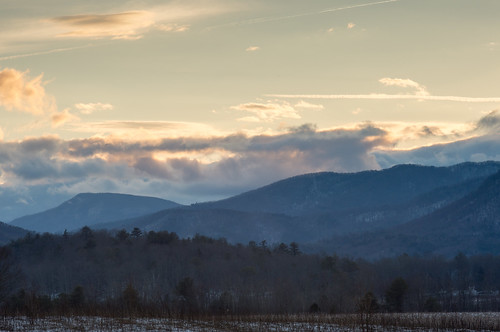 |
| Low clouds backlit by the rising sun. 1/50 @f22, ISO 400. |
It is exciting to imagine photos coming together in your mind as you are driving along and it took everything I had not to stop and start shooting prior to arriving at my pre-planned destination.
Once I parked and set up my tripod and camera with a 24-70mm, I forced myself to take a breath and relax. While it seems everything is happening fast, often there is more time than you realize. It is better to get it right than realize your ISO was still on 3200 from the night before. In this case, I worked the sunrise for almost 30 minutes before it was completely up over the mountain. In that time I was able to use multiple lenses, bracket, try out my new split neutral density filters and move about 50 yards down the road for a slightly different composition.
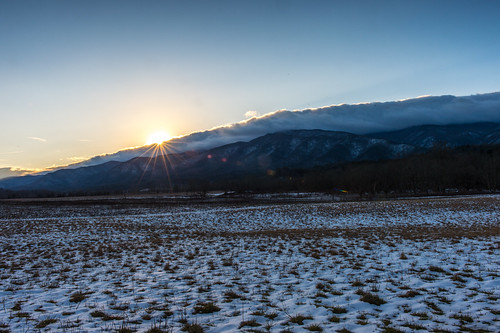 |
| Switched to the 24-70mm with a Cokin split neutral density filter just as the sun rose above the clouds. You can see how the clouds just stuck to the top of the mountains. 1/60 @ f22, ISO 200. |
 |
| Once the sun rose above the clouds I turned around and was treated to some wonderful light. 1/40 @ f22, ISO 200. |
On my drive in I saw plenty of deer and thought it was time to move to a new location and with only a few other cars on the loop, I was able to exit and re-enter in about 20 minutes. Once back on the loop I stopped a few times and waited in locations where I had seen wildlife the previous day and sure enough I spotted four deer off in the distance in the same field I had seen the coyotes.
They were a fair distance off so I grabbed my 300mm with a 2x converter. It was then that I noticed there were three bucks and a doe. After waiting and watching it became clear that the bucks were going to interact and sure enough they locked antlers several times. It also became clear that they were slowly moving in a direction that would have them crossing the road just below where I had spent the morning. I debated staying put, but sometimes you have to take a chance and move.
I'm glad I did. As I parked the deer were still heading in the same direction so I moved to the exact location that I had taken the above photograph earlier. As the deer continued to head in my direction they were still slightly backlit, but after they crossed the road the light was perfect and when they started to run as a car approached, I just started shooting. I had a long lens on which was nice to capture the deer, but meant I was unable to include any background or context.
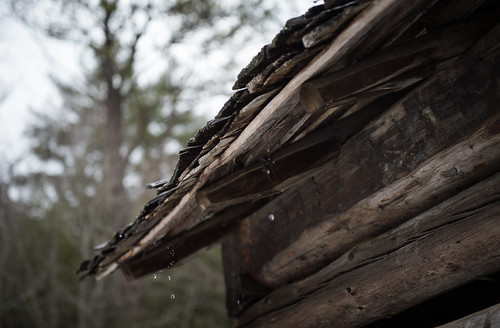 |
| Sometimes it's about the details. With locations like Cades Cove, the tendency is to focus only on the vistas, but sometimes a photo like this tells the story of melting snow. 1/640 @ f2.8, ISO 200. |
After leaving the visitors center, I thought I would drive the 13 miles to the Newfound Gap outlook and scout out locations for the next morning. It is a really pretty drive although it soon became apparent as I increased in elevation that I would be entering the clouds by the time I reached the summit. Of course, these were the same clouds that I had been photographing in the morning.
So before I was fully in the clouds, I stopped about a quarter mile from the top and took a few photos of the clouds moving by which added some softness to the bare trees. Tomorrow I plan on heading back to the summit to photograph the sunrise even though the forecast calls for rain.
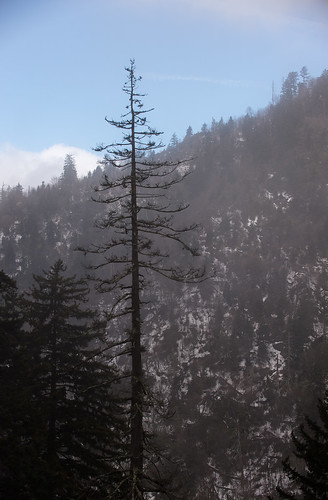 |
| Just short of the Newfound Gap summit, the clouds were already rolling in and provided just the right amount of softness you see in this photograph. 1/800 @ f7.1, ISO 200, Exp. Comp. +1 |
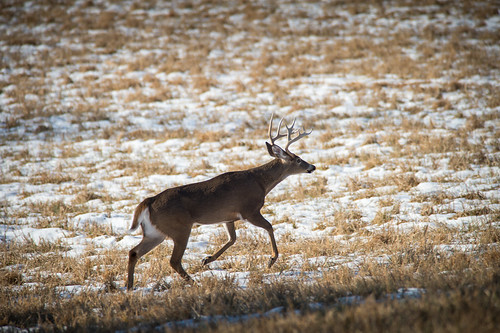
No comments:
Post a Comment